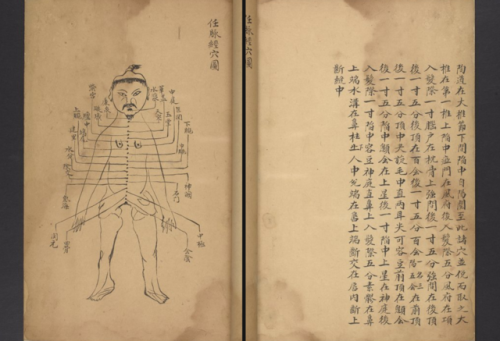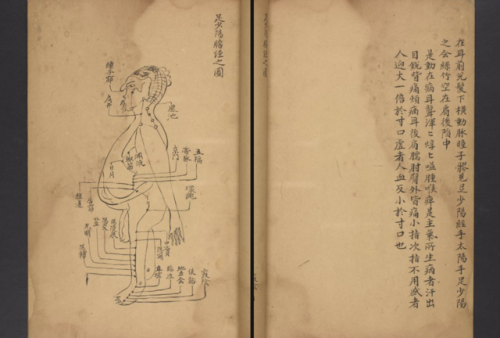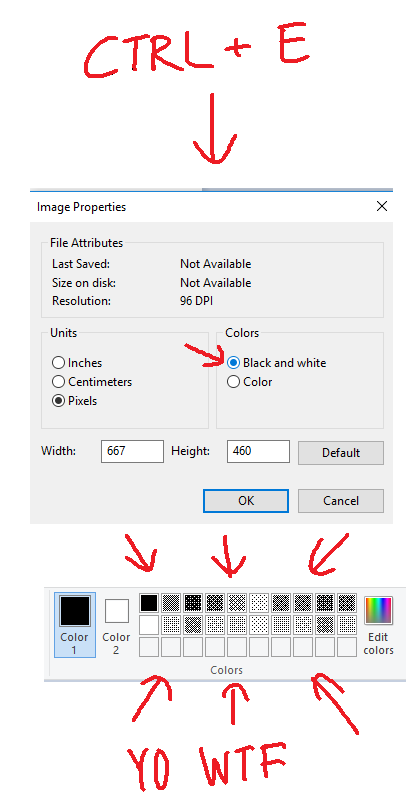Yall Ever Heard About The Wave
yall ever heard about the wave
More Posts from Philosophical-amoeba and Others




I made this to put on my wall for revision, but I thought it might be helpful for some of you guys too so I thought I would share it!



Superfluid Helium
It was previously thought that superfluid Helium would flow continuously without losing kinetic energy. Mathematicians at Newcastle University demonstrated that this is only the case on a surface completely smooth down to the scale of nanometers; and no surface is that smooth.
When a regular fluid like water is passing over a surface, friction creates a boundary layer that ‘sticks’ to surfaces. Just like a regular fluid, when superfluid Helium passes over a rough surface there is a boundary layer created. However the cause is very different. As superfluid Helium flows past a rough surface, mini tornados are created which tangle up and stick together creating a slow-moving boundary layer between the free-moving fluid and the surface. This lack of viscosity is one of the key features that define what a superfluid is and now we know why it still loses kinetic energy when passing over a rough surface.
Now we can use this information to help our efforts on applications of superfluids in precision measurement devices such as gyroscopes (I think this was on the Big Bang theory where they make a gyroscope using superfluid Helium that can maintain angular momentum indefinitely because it would flow across a smooth surface without losing kinetic energy) and as coolants.

I am pretty sure that this cannot be true because I saw an ad from the corn industry that said high fructose corn syrup is good for you…
Fructose alters hundreds of brain genes, which can lead to a wide range of diseases
A range of diseases – from diabetes to cardiovascular disease, and from Alzheimer’s disease to attention deficit hyperactivity disorder – are linked to changes to genes in the brain. A new study by UCLA life scientists has found that hundreds of those genes can be damaged by fructose, a sugar that’s common in the Western diet, in a way that could lead to those diseases.
However, the researchers discovered good news as well: An omega-3 fatty acid known as docosahexaenoic acid, or DHA, seems to reverse the harmful changes produced by fructose.
“DHA changes not just one or two genes; it seems to push the entire gene pattern back to normal, which is remarkable,” said Xia Yang, a senior author of the study and a UCLA assistant professor of integrative biology and physiology. “And we can see why it has such a powerful effect.”
Qingying Meng, Zhe Ying, Emily Noble, Yuqi Zhao, Rahul Agrawal, Andrew Mikhail, Yumei Zhuang, Ethika Tyagi, Qing Zhang, Jae-Hyung Lee, Marco Morselli, Luz Orozco, Weilong Guo, Tina M. Kilts, Jun Zhu, Bin Zhang, Matteo Pellegrini, Xinshu Xiao, Marian F. Young, Fernando Gomez-Pinilla, Xia Yang. Systems Nutrigenomics Reveals Brain Gene Networks Linking Metabolic and Brain Disorders. EBioMedicine, 2016; DOI: 10.1016/j.ebiom.2016.04.008
Americans get most of their fructose in foods that are sweetened with high-fructose corn syrup, an inexpensive liquid sweetener made from corn starch, and from sweetened drinks, syrups, honey and desserts. The Department of Agriculture estimates that Americans consumed an average of about 27 pounds of high-fructose corn syrup in 2014. Credit: © AlenKadr / Fotolia
Chai Tea
Word for tea in most of the world’s languages are all ultimately related, belonging to two groups of terms.
“Tea” itself belongs to one of those groups. It was a borrowing from Dutch thee, in turn from tê, the reading of 茶 in the Amoy dialect of Min Nan. Those languages whose introduction to tea was primaraly from Dutch traders typically use words likewise derived via the Dutch thee. The Polish herbata is also part of this family, though slightly obscured, being a borrowing from the Latin herba thea.
The other major group is represented by the word chai, a more recent borrowing in English. Chai was borrowed from the Hindi cāy, which in turn came from a Chinese dialect with a form similar to Mandarin chá. Languages that use chai-type terms generally were first introduced to tea through overland trade, ultimately to northern China, while those that use tea-type terms were generally introduced to it via sea trade, from Southern China.
Both tê and chá are derived from the same Middle Chinese form, ultimately derived from Proto-Sino-Tibetan *s-la “leaf”.





This week, we’re taking a look at manuscripts having to do with health, medicine, and human physiology specifically focusing on how bodies are displayed in manuscript illuminations or diagrams across different cultures.
LJS 389 shown above, is a 14th century Chinese treatise on the anatomy, physiology, and pathology of blood vessels titled Shi si jing fa hui. The manuscript is made from bamboo paper and the diagrams and kaishu script are written with black ink. Focus on the diagrams of the bodies and stay tuned this week to see not only how the details and forms of these depictions change from culture to culture, but also the mediums with which these manuscripts are created.
The full LJS 389 manuscript filled with more diagrams can be found on Openn: http://openn.library.upenn.edu/Data/0001/html/ljs389.html
and Penn In Hand: http://hdl.library.upenn.edu/1017/d/medren/4824235
Free Online Language Courses

*UPDATED* Here is a masterpost of MOOCs (massive open online courses) that are available, archived, or starting soon. Some are short, some are very interactive, some are very in-depth. I think they will help those that like to learn with a teacher or with videos. I checked each link to make sure they are functioning.
Spanish
Beginner
AP Spanish Language & Culture
Basic Spanish for English Speakers
Beginner’s Spanish:Food & Drink
Fastbreak Spanish
How to Self-Study Spanish
Preparing for the AP Spanish Exam
Spanish for Beginners
Intermediate
Spanish:Ciudades con Historia
Spanish:Espacios Públicos
Advanced
Corrección, Estilo y Variaciones
La Innovación Social (Check under Translation)
Leer a Macondo (Taught in Spanish)
Spanish:Con Mis Propias Manos
Spanish: Perspectivas Porteñas
Reading Spanish Literature
French
Beginner
AP French Language and Culture
Basic French Skills
Beginner’s French: Food & Drink
Diploma in French
Elementary French I
Elementary French II
Français Interactif
French in Action
French Language Studies I
French Language Studies II
French Language Studies III
French:Ouverture
French Through Stories and Conversation
Improving Your French
Mastering French Grammar and Vocab
Intermediate
French: Le Quatorze Juillet
Passe Partout
Advanced
Fantasy, de l'Angleterre Victorienne au Trône de fer
La Cité des Sciences et de Industrie
Les Chansons des Troubadours
Reading French Literature
Portuguese
Brazilian Portuguese for Beginners
Curso de Português para Estrangeiros
Italian
Beginner
Beginner’s Italian: Food & Drink
Beginner Italian I
Introduction to Italian
Oggi e Domani
Survive Italy Without Being Fluent
Intermediate
Intermediate Italian I
Advanced
Advanced Italian I
Italian Literature
Italian Novel of the Twentieth Century
L'innovazione Sociale (Check language under translation)
Reading Italian Literature
Catalan
Intro to Catalan Sign Language
Latin
Latin I (Taught in Italian)
Russian
Beginner
Basics of Russian
Easy Accelerated Learning for Russian
Russian Alphabet
Russian Essentials
Russian for Beginners
Russian Level I
Russian Phonetics and Pronunciation
Reading and Writing Russian
Travel Russian
Advanced
Business Russian (must register)
Let Us Speak Russian (must register)
Reading Master and Margarita
Russian as an Instrument of Communication
Siberia: Russian for Foreigners
Ukrainian
Read Ukrainian
Ukrainian Language for Beginners
Kazakh
A1-B2 Kazakh (Taught in Russian)
Chinese
Beginner
Basic Chinese
Basic Mandarin Chinese I
Basic Mandarin Chinese II
Beginner’s Chinese
Chinese for Beginners
Chinese Characters
Chinese for Travelers
Chinese is Easy
Chinese Made Easy
Easy Mandarin
First Year Chinese I
First Year Chinese II
Learn Oral Chinese
Mandarin Chinese I
Start Talking Mandarin Chinese
UT Gateway to Chinese
Intermediate
Intermediate Business Chinese
Intermediate Chinese
Intermediate Chinese Grammar
Japanese
Beginner’s Conversational Japanese
Genki
Japanese JOSHU
Learn 80 JLPT N5 Kanji I
Learn 80 JLPT N5 Kanji II
Learn 80 JLPT N5 Kanji III
Learn 80 JLPT N5 Kanji IV
Korean
Beginner
First Step Korean
How to Study Korean
Pathway to Spoken Korean
Intermediate
Intermediate Korean
Dutch
Introduction to Dutch
German
Beginner
Basic German
Basic Language Skills
Beginner’s German: Food & Drink
Conversational German I
Conversational German II
Conversational German III
Conversational German IV
Deutsch im Blick
Diploma in German
German A1 Grammar
German Alphabet
German Modal Verbs
Present Tense German
Rundblick-Beginner’s German
Study German Language from Native Speakers
Advanced
German:Regionen Traditionen und Geschichte
Landschaftliche Vielfalt
Reading German Literature
Norwegian
Learn The Norwegian Language
Norwegian on the Web
Swedish
Intro to Swedish
Finnish
A Taste of Finnish
Basic Finnish
Finnish for Immigrants
Finnish for Medical Professionals
Frisian
Introduction to Frisian (Taught in Dutch)
Icelandic
Icelandic 1-5
Arabic
Arabic for Global Exchange (in the drop down menu)
Arabic Language for Beginners
Arabic Without Walls
Conversational Arabic Made Easy
Intro to Arabic
Lebanese Arabic
Madinah Arabic
Moroccan Arabic
Read Arabic
Hebrew
Hebrew Alphabet Crashcourse
Know the Hebrew Alphabet
Hindi
A Door into Hindi
Business Hindi
Virtual Hindi
Indonesian
Learn Indonesian
Nepali
Beginner’s Conversation and Grammar
Welsh
Beginner’s Welsh
Discovering Wales
Irish
Introduction to Irish
Multiple Languages
http://ocw.mit.edu/courses/global-studies-and-languages/ : MIT’s open courseware site has assignments and course material available.
I’ll keep an eye out for new courses and if you know of any, let me know so I can update this list.
Last updated: February 19, 2016
Do you any tips about using ms paint?
I think I have few tips
#1Use 500x500 px or bigger canvas size. Any smaller size will make a brush look messy and shit.Here look:


Can you see the difference?? Lineart in 600x600 px is so much smoother
#2

#3

#4 RIGHT MOUSE BUTTON YOU NEED IT

#5


*:・゚✧it’s like manga : *✧・゚
that’s all tbh
i hope this was somewhat helpful
im putting together a couple of scottish folk mixes bc that’s what i do and im honestly curious if anyone in my country has ever been unequivocally happy about anything ever
-
 ricecakesonice liked this · 2 weeks ago
ricecakesonice liked this · 2 weeks ago -
 wicked-ashen-axe liked this · 3 weeks ago
wicked-ashen-axe liked this · 3 weeks ago -
 loistankuinhamara liked this · 3 weeks ago
loistankuinhamara liked this · 3 weeks ago -
 superstar-ethereal liked this · 3 weeks ago
superstar-ethereal liked this · 3 weeks ago -
 lovingearthquakenightmare liked this · 3 weeks ago
lovingearthquakenightmare liked this · 3 weeks ago -
 alchemilliam reblogged this · 3 weeks ago
alchemilliam reblogged this · 3 weeks ago -
 alchemilliam liked this · 3 weeks ago
alchemilliam liked this · 3 weeks ago -
 ihavenocluewhatiwanttobecalled liked this · 3 weeks ago
ihavenocluewhatiwanttobecalled liked this · 3 weeks ago -
 noodle-shenaniganery reblogged this · 3 weeks ago
noodle-shenaniganery reblogged this · 3 weeks ago -
 whyamiheretellme liked this · 1 month ago
whyamiheretellme liked this · 1 month ago -
 noodle-shenaniganery reblogged this · 1 month ago
noodle-shenaniganery reblogged this · 1 month ago -
 wellroundedfandoms reblogged this · 1 month ago
wellroundedfandoms reblogged this · 1 month ago -
 isabellacvt liked this · 1 month ago
isabellacvt liked this · 1 month ago -
 rebelgray liked this · 1 month ago
rebelgray liked this · 1 month ago -
 unnecessarily-neurodivergent liked this · 1 month ago
unnecessarily-neurodivergent liked this · 1 month ago -
 endoplasmic-parakeet liked this · 1 month ago
endoplasmic-parakeet liked this · 1 month ago -
 noodle-shenaniganery reblogged this · 1 month ago
noodle-shenaniganery reblogged this · 1 month ago -
 mcfkn liked this · 1 month ago
mcfkn liked this · 1 month ago -
 therightamoutofshitty liked this · 1 month ago
therightamoutofshitty liked this · 1 month ago -
 floweramon reblogged this · 1 month ago
floweramon reblogged this · 1 month ago -
 imaginehavingaregularthought reblogged this · 2 months ago
imaginehavingaregularthought reblogged this · 2 months ago -
 the-archer-goddess liked this · 2 months ago
the-archer-goddess liked this · 2 months ago -
 floweramon reblogged this · 2 months ago
floweramon reblogged this · 2 months ago -
 theonepenguin liked this · 2 months ago
theonepenguin liked this · 2 months ago -
 call-me-cedar reblogged this · 2 months ago
call-me-cedar reblogged this · 2 months ago -
 call-me-cedar liked this · 2 months ago
call-me-cedar liked this · 2 months ago -
 astreaprtcl reblogged this · 2 months ago
astreaprtcl reblogged this · 2 months ago -
 noodle-shenaniganery reblogged this · 2 months ago
noodle-shenaniganery reblogged this · 2 months ago -
 noodle-shenaniganery liked this · 2 months ago
noodle-shenaniganery liked this · 2 months ago -
 feverdreamerofthestars liked this · 2 months ago
feverdreamerofthestars liked this · 2 months ago -
 marxandtohfangirlsystem reblogged this · 2 months ago
marxandtohfangirlsystem reblogged this · 2 months ago -
 marxandtohfangirlsystem liked this · 2 months ago
marxandtohfangirlsystem liked this · 2 months ago -
 ayoitslilith reblogged this · 2 months ago
ayoitslilith reblogged this · 2 months ago -
 ayoitslilith liked this · 2 months ago
ayoitslilith liked this · 2 months ago -
 midnight-soulless-system reblogged this · 2 months ago
midnight-soulless-system reblogged this · 2 months ago -
 midnight-soulless-system liked this · 2 months ago
midnight-soulless-system liked this · 2 months ago -
 karetahana liked this · 2 months ago
karetahana liked this · 2 months ago -
 blue-jacket-blues reblogged this · 2 months ago
blue-jacket-blues reblogged this · 2 months ago -
 herehaveafandom reblogged this · 2 months ago
herehaveafandom reblogged this · 2 months ago -
 wendrin reblogged this · 2 months ago
wendrin reblogged this · 2 months ago -
 wendrin liked this · 2 months ago
wendrin liked this · 2 months ago -
 abbessolute reblogged this · 2 months ago
abbessolute reblogged this · 2 months ago -
 fredendil reblogged this · 4 months ago
fredendil reblogged this · 4 months ago -
 fredendil liked this · 4 months ago
fredendil liked this · 4 months ago -
 wolfrhamhart reblogged this · 4 months ago
wolfrhamhart reblogged this · 4 months ago -
 angirasah liked this · 4 months ago
angirasah liked this · 4 months ago -
 space-rogue reblogged this · 5 months ago
space-rogue reblogged this · 5 months ago -
 bbt-circa-2018 reblogged this · 5 months ago
bbt-circa-2018 reblogged this · 5 months ago -
 baddreamdoll liked this · 5 months ago
baddreamdoll liked this · 5 months ago -
 dysfunctionalgoddess liked this · 5 months ago
dysfunctionalgoddess liked this · 5 months ago
A reblog of nerdy and quirky stuff that pique my interest.
291 posts










